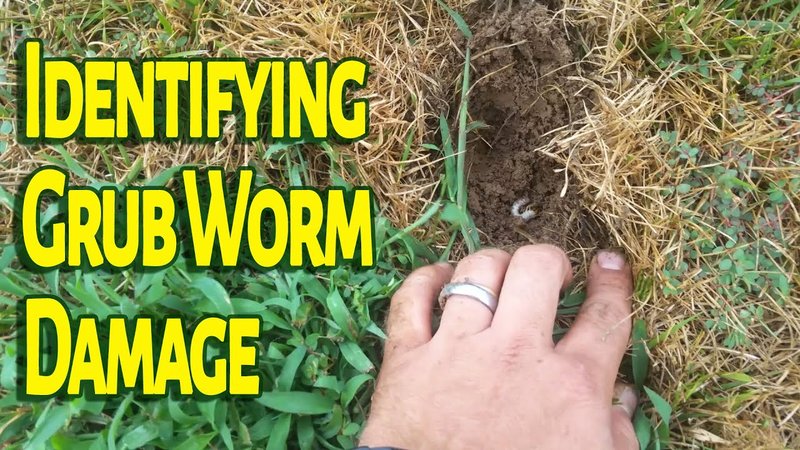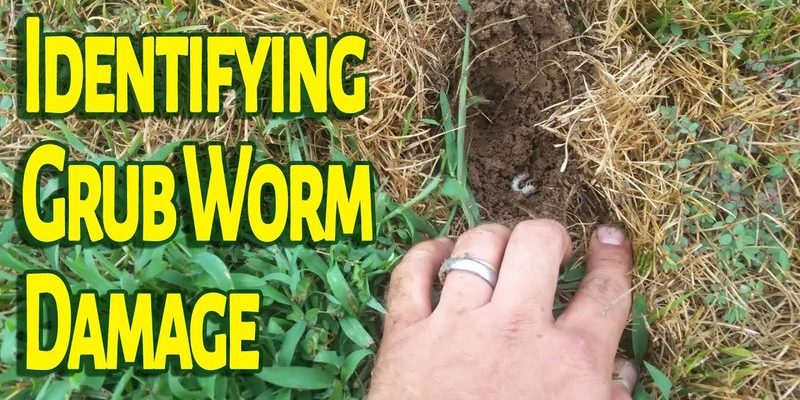
If you’re curious about whether your yard has become a dining hotspot for our feathered friends, keep reading. We’ll explore the clear signs that birds are munching on grub worms and why that’s both fascinating and important for your lawn’s health.
1. Frequent Bird Sightings
One of the most obvious signs that birds are feeding on **grub worms** in your yard is simply: lots of birds! If you’re seeing a steady stream of birds—especially species that love to eat insects, like robins or starlings—your lawn might be their go-to spot for dinner.
Birds are naturally drawn to vibrant areas where they can find food easily. If your yard has a lush green patch, it might just be a buffet of yumminess for them. When birds start to gather in groups, it’s a strong indicator that they’ve discovered a feast. So, whether it’s during the early morning or late afternoon, keep an eye out. You might just catch them in the act of searching for those delectable grub worms!
2. Disturbed Soil and Grass
Another telling sign that birds are hunting grocery-style in your yard is the state of your soil and grass. If you see areas where the earth looks disturbed or the grass is pulled up, that’s a red flag! When birds dig into the ground in search of grub worms, they leave behind evidence of their search—think of it as nature’s version of a dining table being left messy after a big meal.
If the soil is noticeably uneven or you see patches where grass is missing, it’s likely that birds are doing a little landscaping of their own while foraging. This activity not only disturbs the ground but can also lead to bald patches in your lawn, which isn’t just unattractive but can also affect the overall health of your yard.
3. Increased Activity at Feeding Times
Birds are creatures of habit, and they tend to feed at specific times of the day. If you notice they’re particularly active in your yard during dawn or dusk, that could indicate they’re feasting on grub worms. This is when many insects, including grubs, are most active near the soil surface.
You might find them hopping around, pecking at the ground, or even doing some short flights to get a better look at the grass. If you start to see a pattern in their feeding times, mark your calendar! It can be a delightful routine to watch them work. Just like humans might plan a lunch break, birds have their own schedule for snacking!
4. Signs of Damage to Your Lawn
While it may seem cute to watch birds feeding, their activities can lead to **lawn damage**. If you find areas that are turning brown or wilting, it may be because the birds are digging up more than just a few grubs. They can disrupt the root systems of your grass, which is vital for your yard’s health.
Moreover, if grubs are in large numbers, birds might be just the beginning of your lawn troubles. More grubs can attract other animals and pests, leading to bigger issues. Keep an eye out for patches that look unhealthy—this could mean your bird buffet is actually causing more harm than good in the long run.
5. Feather and Bird Droppings Around Your Yard
Have you found some feathers or droppings scattered around? These little signs can be another indicator that birds are hanging out in your yard more often than usual. When birds find a reliable food source like **grub worms**, they’ll often return frequently, leading to an increase in these telltale clues.
Feathers can hint at a variety of birds, while droppings are typically a sign they are sticking around for the grub buffet. Just remember that bird droppings can also be high in nitrogen, which can be a double-edged sword for your garden—while it can help fertilize your lawn, too much can lead to imbalances.
6. The Type of Birds Visiting Your Yard
Different birds have different diets, so it’s essential to pay attention to what types of birds are visiting you. If you notice species known for eating insects—like sparrows, robins, or blue jays—there’s a good chance they’re on the hunt for grub worms.
Think of it this way: just like a chef looks for the freshest ingredients, birds are selective about their meals too. If your yard is attracting these insect-loving birds, it’s often because they’ve figured out that your lawn has a tasty stockpile of grub worms beneath the surface.
7. Monitor Your Grub Population
While birds can be beneficial for controlling grub populations, it’s important to monitor how many grubs are actually in your yard. If you’re noticing more birds, it might be time to dig a bit deeper—literally!
Look out for signs of grubs, like irregular patches of soil or the presence of beetles. If you see the grub worm population growing, you’ll want to address it before it leads to more significant lawn issues. A healthy balance is key in yard management, and while birds help, keeping track ensures your lawn stays beautiful and vibrant.
8. Consider Your Lawn Care Practices
Finally, understanding how to take care of your lawn can make a big difference in how birds interact with it. Regular mowing, watering, and aerating can help maintain a healthy yard, which can support both birds and other wildlife.
Implementing organic gardening practices, like the use of beneficial nematodes, can help reduce grub populations naturally, attracting birds without harming your lawn. Remember, a thriving ecosystem can lead to happy birds and a beautiful yard!
In conclusion, spotting birds feasting on grub worms in your yard can be a delightful experience, but it’s also important to keep an eye on the health of your lawn. By understanding the signs and impacts of their feeding habits, you can create a balanced environment that benefits both your feathered friends and your grass. Keep that bird buffet going strong while maintaining a healthy lawn—it’s all about finding that perfect harmony!

